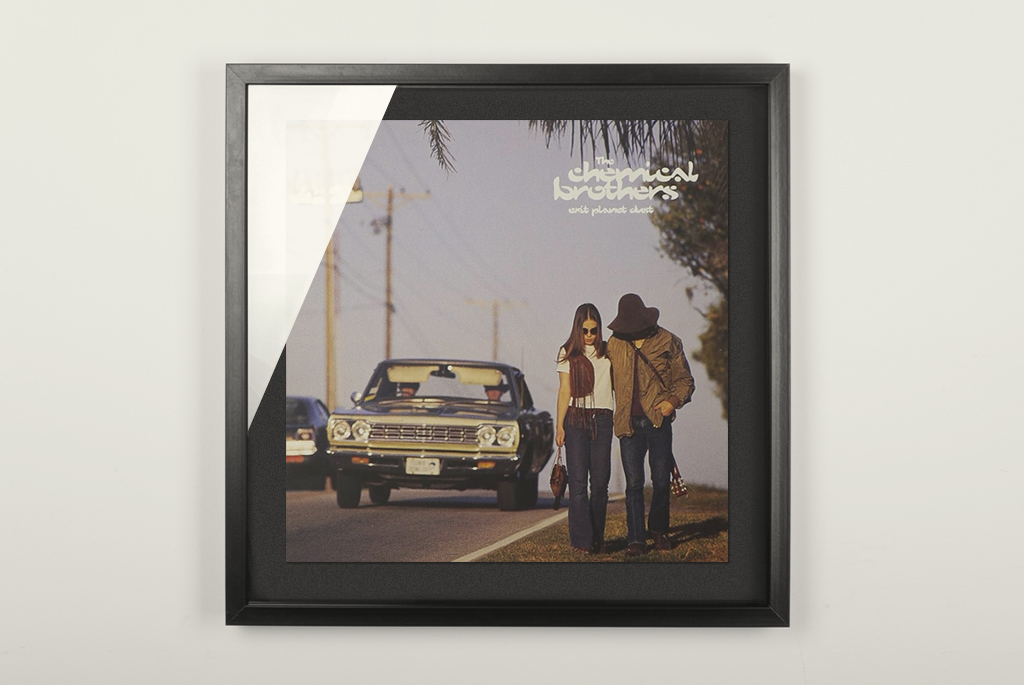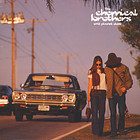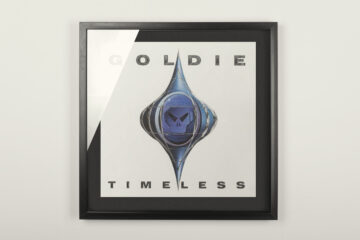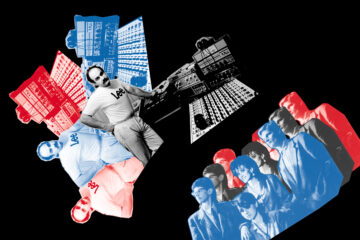In 1995, the (not only) English dance music world was still spinning on 12-inch records. Few artists at the swirling intersection of warehouse rave and club techno had released a proper album that didn’t just feel like a compilation of singles. Orbital had been pursuing this route over several albums but were largely shunned by the scene due to their major label contract. The Prodigy had just broken through with Music for the Jilted Generation. Leftfield peeked into the fray from the sidelines with Leftism but were—unfortunately—quickly forgotten.
With a few exceptions, dance music was considered a disposable commodity. One track might tear up the clubs today, only to be outshone by the next one next week. Above all, there were no superstars. It was always about the track in the club. Commercial success meant selling out—no longer being street enough. England’s sharp sense of class and scene consciousness hit hard.
When Ed Simons and Tom Rowlands began DJing in the early 1990s—and later started producing out of necessity, since they lacked material for their frenetic sets—they likely adopted these club world rules. A name meant nothing. So, quite naively, they named themselves after the US producer heavyweights The Dust Brothers, who had famously saved the Beastie Boys’ Paul’s Boutique (1989).
The Night belongs to the Track
But after the two Brits completely dismantled The Prodigy’s Voodoo People and rebuilt it into a sluggish beat swamp—so strong it topped the A-side of the single—their anonymity was over. The real Dust Brothers sued. Simons and Rowlands renamed themselves The Chemical Brothers, released their debut album Exit Planet Dust, and never looked back. Overnight, they went from playing the small Heavenly Sunday Social Club in London’s Albany Pub to appearing on the world stage and playing pop and rock festivals like Glastonbury.
»I bet they all have a secret box of Simon & Garfunkel under their beds.«
The Chemical Brothers know the bedrooms of techno fans.
For Simons and Rowlands, this was no contradiction. They had long since grown tired of the clique-ish mentality of English dance and club culture. Even in their DJ sets, they rejected genre purity. Instead, they threw everything—Electronica, Techno, Hip-Hop, Electro, Dub, Indie Pop, and Rock’n’Roll—into a boiling cauldron. In an interview with Muzik magazine in June 1995, they explained their approach simply as a love for diversity in music:
»You need different sounds to fit different moods. We’re both into lots of types of music and I don’t see why we should have to deny that. I can’t believe that even the most dedicated techno buff would want to stick on a Basic Channel tune when they woke up on a summery Sunday morning. I bet they all have a secret stash of Simon and Garfunkel under their beds.«
That’s why it’s not too far-fetched when Tom Breihan, in his 2015 retrospective, called Exit Planet Dust not the best dance album, but the best psychedelic rock album of the 1990s. He added: »The drums aren’t nimble house drums; they’re big, galumphing thunder-bombs. […] The synths don’t needle or stab; they riff.«
From Dust to Chemistry
The intense, distorted beats on Exit Planet Dust also helped define the genre later known as Big Beat, which saw the rise of Fatboy Slim, Basement Jaxx, The Prodigy, and Groove Armada alongside the Chemical Brothers. In 1995, however, Big Beat didn’t yet mean endlessly recycling the same breakbeats into generic earworms. No one was thinking about using them in cider commercials, family car ads, or instant coffee campaigns. Back then, Simons and Rowlands were still fully immersed in England’s warehouse raves and club nights—where people tripped, sweated, and partied until they dropped.
Exit Planet Dust is the raw diamond of Big Beat. The sounds are noisy, the beats heavy—like a punch to the face. The first part of the album—conveniently bundled on LP1 of the double vinyl—functions like a driving DJ set. The six tracks flow into one another with almost no noticeable breaks, building momentum until the dancefloor is flattened by the steel press of Chemical Beats.
What makes Exit Planet Dust work musically—and what elevates it to the level of a true album—is the second half. Only here does it become a story, one that a significant portion of 1995’s youth could all too easily identify with: the weekly narrative of a night out raving.
Between demolition and finalisation
In the Muzik interview, Ed Simons lamented the fact that no one had yet made a dance album that truly captured the essence of early-’90s British youth culture: »Why is it left to a group like Oasis to express the way that young people want to go out and get battered every weekend? That’s what the Chemical Brothers are about. Tom and I are out all the time, off to clubs and gigs, living fast, living it up. That’s what I hope we’re putting across on our records.«
While the first half of the album celebrates the sweaty club with stomping, slow-moving techno beats in a near-continuous mix, the second half tells of the comedown—chillout rooms, tired car rides into the sunrise, smoke-filled living rooms. The pounding, gnarly sounds give way to dubby textures, psychedelic melodies, and downtempo grooves. After sweating comes the air-out, the emotional submersion. With contributions from Tim Burgess of The Charlatans and folk singer Beth Orton, even vocals find their way into the more song-like tracks.
Exit Planet Dust is probably not the single best dance album—or psychedelic rock album—of the 1990s. But with its larger-than-life beats, teenage brashness, and its impeccable sequencing and sense of sonic theatre, it remains one of the genre’s essential works—still relevant today, whether blasting across festival fields or playing through your hi-fi at home.










